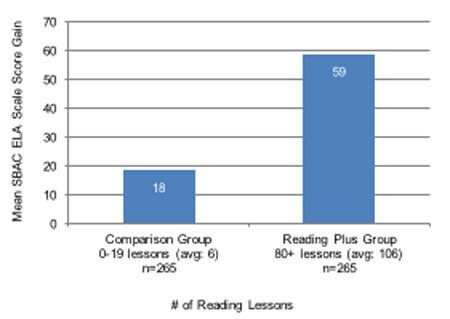
Purpose of Study:
This study focused on the impact of Reading Plus on student achievement as measured by the Smarter Balanced Assessment Consortium (SBAC) English Language Arts (ELA) assessment. Changes in the reading proficiency of students were measured in relation to the amount of Reading Plus reading practice the students engaged in during the course of the 2015-16 school year.
Study Design:
A quasi-experimental ex post facto methodology was used for this study. This design creates “treatment” and “comparison” groups ex post facto (after the fact) to approximate the random assignment of students that would occur in an experimental design study. Students who completed at least 80 Reading Plus lessons were matched with students who completed fewer than 20 Reading Plus lessons. Matching was based on student demographic characteristics and initial SBAC ELA performance to create “baseline equivalence” between the two groups. In this study, 265 students in grades 5-8 from a large suburban school district in Southern California were matched based on the described methodology.
Key Results:
Students who completed at least 80 Reading Plus lessons achieved three times the SBAC ELA scale score gains in comparison to a group of demographically similar students who had minimal or no Reading Plus use (significant at p<.001). These scale score gains translated into more than twice as many Reading Plus students advancing to a higher SBAC ELA achievement level.

